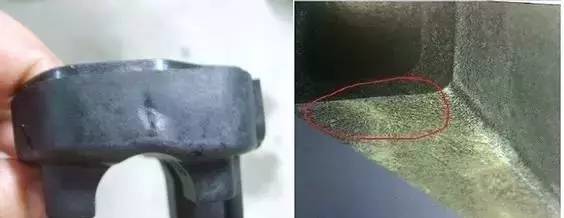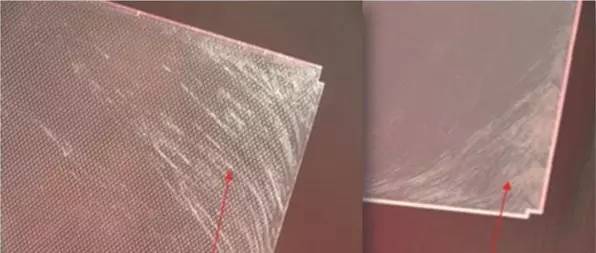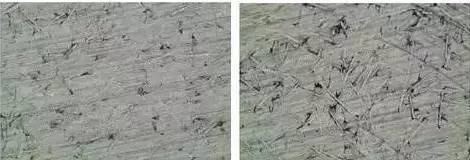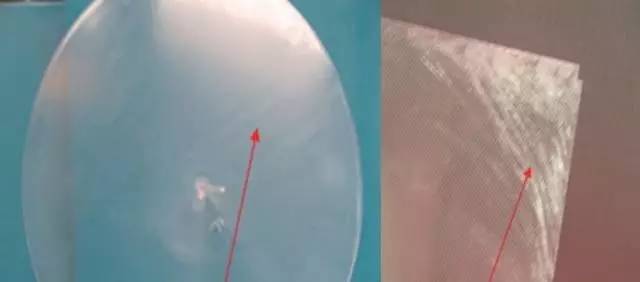Adding fillers such as glass fibers and tougheners to nylon can significantly increase the mechanical properties of the material. However, in the process of glass fiber reinforced nylon injection molding, the phenomenon of "floating fiber" often occurs. The floating fiber is also called the exposed fiber, that is, the glass fiber is exposed on the surface of the product and is relatively rough. Due to the exposure of glass fiber, the application of such products is limited, and it is mainly applied to high-strength structural parts. Anything that uses fiber-reinforced materials for appearance parts is matt or etched (such as power tools), because it is difficult to achieve a beautiful appearance with ordinary fiber. "Floating fiber" phenomenon in plastic parts Reasons for the appearance of "floating fiber" in glass fiber reinforced nylon There are many reasons for the formation of floating fiber. The main reasons are as follows: (1) Poor compatibility of glass fiber and nylon Since the plastic melt is subjected to the frictional shearing force of the screw, the nozzle, the runner and the gate during the flow process, the local viscosity difference is caused, and at the same time, the interface layer on the surface of the glass fiber is destroyed, and the melt viscosity is smaller, the interface is The more severe the layer damage, the smaller the adhesion between the glass fiber and the resin. When the adhesion is small to a certain extent, the glass fiber will get rid of the bond of the resin matrix and gradually accumulate to the surface and be exposed. (2) Difference in specific gravity between glass fiber and base material In the flow of plastic melt, due to the difference in fluidity between the glass fiber and the resin, and the mass density is also different, the two have a tendency to separate, the glass fiber floats to the surface, and the resin sinks inward, thus forming a glass fiber exposed. The phenomenon. (3) Fountain effect When the nylon melt is injected into the mold, a "fountain" effect is formed, that is, the glass fiber flows from the inside to the outside surface, and is in contact with the surface of the cavity. Due to the lower temperature of the mold profile, the glass fiber with light weight and fast condensation is instantaneously frozen. If it is not fully surrounded by the melt in time, it will be exposed to form a "floating fiber". Therefore, the formation of the "floating fiber" phenomenon is not only related to the composition and characteristics of plastic materials, but also related to the molding process, with great complexity and uncertainty. Glass fiber reinforced nylon has a "floating fiber" solution In actual production, there are various measures for improving the phenomenon of "floating fiber". (1) Improve the compatibility of glass fiber and nylon Adding additives such as compatibility, dispersant and lubricant to the molding material, including silane coupling agent, maleic anhydride grafting compatibilizer, fatty acid lubricant and some domestic or imported anti-glass fiber exposed agent, etc. These additives improve the compatibility between the glass fiber and the resin, improve the uniformity of the dispersed phase, increase the interfacial bond strength, and reduce the separation of the glass fiber and the resin, thereby improving the appearance of the glass fiber. As studies have shown, the addition of a compatibilizer to the matrix, the compatibility of the modified glass fiber in the matrix is ​​significantly improved compared to the unadded material. Surface floatation after modification (left) and unmodified (right) material (2) Improve molding process conditions a. increase the filling speed After increasing the speed, although the flow rate of glass fiber and plastic is different, the ratio of the relative speed difference is small compared with the high-speed shot. b. raise the mold temperature This effect is the biggest. Increasing the mold temperature is to reduce the contact resistance between the glass fiber and the mold, so that the speed difference between the glass fiber and the plastic is as small as possible. And let the middle molten layer when the plastic flows as thick as possible, so that the skin layers on both sides are as thin as possible, so that the smooth river bank can not retain the branches. RHCM is using this principle to achieve the appearance of no floating fiber. c. Reduce the temperature of the screw metering section and reduce the amount of sol This is to minimize the possibility of separating the plastic and the glass fiber. Generally speaking, the effect on the floating fiber is minimal, and the effect in the actual operation is not large. However, this can be a good solution to burnt. This is because after the glass fiber is added, it is easy to block the exhaust passage, so it is difficult to exhaust at the end, and the glass fiber is easily burned in a high-pressure high-oxygen gas environment. (3) mold aspect Deliberately make the appearance of the product into a matte or etched surface to reduce the visual response of the exposed fiber. Sewing Measuring Tape,Tailor Measuring Tape,Custom Logo Tape Measure,Tailor Measuring Soft Tape Measure Shangqiu Hengli Measuring Tools Co.,Ltd , https://www.henglimtools.com






What should I do with "floating fiber" in glass fiber reinforced nylon? Finally have the answer!
/*kangxianyue 250*250 was created on 2017/3/29*/ var cpro_id = "u2939694";